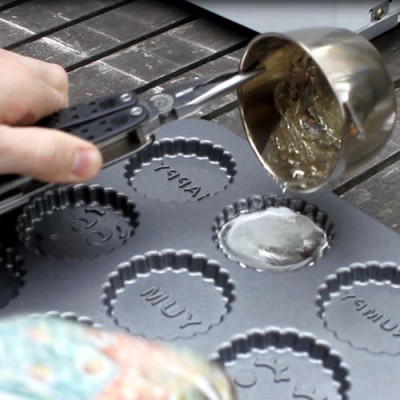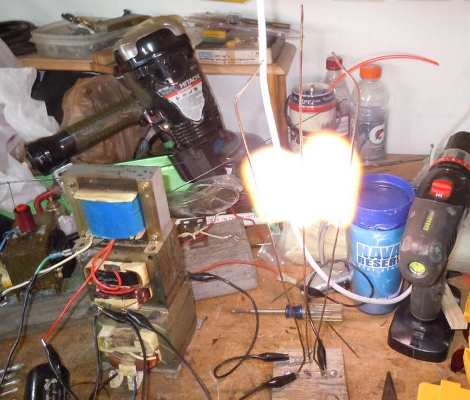
This is the biggest bug zapper we’ve ever seen. It’s called the Megazap as its zapping area is 1 square meter. [Eighdot] and [Sa007] combined their talents for the build in order to help reduce the insect population around the Eth0 2012 Summer festival.
You may recall from our bug zapping light saber build that these devices work by providing two energized grids. When an insect flies between the grids it allows the potential energy to overcome the air resistance by travelling through the insect’s body. The Megazap uses a transformer from a microwave oven to source that potential. The transformer produces 2.4 kV and the current is limited by a floodlight fitted inside the microwave. The side effect of using the lamp as a limiter is that it lights up with each bug zapped, providing a bit of a light show. Don’t miss the video after the break to see some flying foes get the life shocked out of them.













